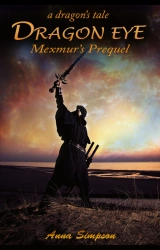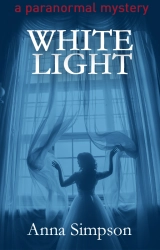Other segments you might enjoy Part two, + Part three.
I realized that I needed to brush up on my revision after reading a short I wrote a while back. So I decided this month would be dedicated to researching and discussing the many stages of revision. My story would never do as is, this I knew. The question was how to approach my task.
Revision is looking at your work from a critical perspective. It’s rethinking the story from beginning to end, examining the overall picture, and asking, does it meet what you’ve envisioned?
Be warned, revising takes more than one session. It can be time consuming, frustrating, and challenging at the best of times. Using different stages of revision, a work can go from a mediocre draft to a polished work of art.
The Stages:
- Let it rest, because when you go back to it, you may have to rip it to shreds.
- Read through the work, making notes.
- Remove the portions that don’t work.
- Break it down, and reorganize if necessary, building tension at each
 step
step - Read through, looking for plot and subplot holes and loose ends
- Fill in the holes, tie up loose ends, flesh out characters, and make your settings pop
- Read through, looking for your voice
- Select your perfect words, change up on the sentence structure, and make it sound like your acting it out
- Read through, looking for grammar, punctuation, and spelling errors
- Once polished, send out to beta readers, act on feedback
- Submit, take feedback to heart, and revise again
- Repeat until published
Note: Many of you will do some parts naturally and don’t need every stage to succeed. Others will be making a more in depth list of stages that will work for them. Do what you need to make the revision process yours.
Pantser, or planner we all have a vision. It doesn’t matter how we get there. There are millions of excellent works available today. If you want your work out there with them, you will have to do your very best. Don’t hold back. Give it everything you have and more. Think brass ring.
Writers: Do you have a method of staying on track? What works best for you?
Book Bloggers: Plot, subplots are a big part of a review, what do you look for  when doing a review?
when doing a review?
Gleaned from:
- http://writingcenter.unc.edu/handouts/revising-drafts , http://writingcenter.unc.edu/handouts/word-choice , http://writingcenter.unc.edu/handouts/reorganizing-drafts
- http://www.writing.utoronto.ca/advice/style-and-editing/revising
- http://www.writersdigestshop.com/revision-techniques-advice
- https://owl.english.purdue.edu/owl/resource/561/05










I much prefer revisions to writing the first draft. There is a skeleton with which to work in the revision stage but with the first draft you are faced with nothing. Absolutely nothing and you have to fill that void.
True. Writing is like flying free to me. I love it. Revisions prove what stuff we’re made of–determination, vision, a struggle toward perfection, etc.
Good luck with all your revisions!! Did you change your blog? It looks great!
Thanks. I did change it around. I made my own banner and that was a first. 🙂
Wow.. very helpful and bookmarked for future reference.
Thanks, hope to see you again next week 🙂
“Be warned, revising takes more than one session” Truer words have never been spoken.
My process, as inelegant as it may be, is to just go over and over the words again and again until I can find no other changes to make. Then I put that chapter away and come back to it again in another month and repeat the process.
Very hard work that I’m sure is worth the effort. 🙂
Beautifully organized. I do start out that way, and then it all falls apart around me. Sigh.
Well, it’s where I begin. Let’s just say it’s not pretty in the execution. Nope, not pretty at all. 🙂
This is a nice concise list of things to look for when revising. Great post and very helpful. I love your links, too. I agree that letting a work sit for a time really helps.
It gives me reader eyes or critter eyes depending on my hat 🙂
I like that your steps include reading through multiple times. It’s so important.
I just can’t do it all at once. You know me break it down into doable pieces. 🙂
That’s a very thorough list! I basically read and re-read. When I get to the point where I can read it through without changing something, I’m done.
As long as it works for you, I’m all for it. 🙂
My absolute must-do rule, is to read your work out loud. It forces you to slow down, and you pick up on much more repetition, and clumsy syntax than you would reading in your head. I’ve also recently discovered how many errors I can pick up reading through on my Kindle app, that I had missed when editing on my laptop. I couldn’t believe what a difference it made.
Yes, I use my kindle too. If I’m reading on my computer a drag my cursor under the words as I go. This slows me down and helps me focus on each word.
Your new digs look great! I agree with you, letting the work cool off a while and reading out loud are so important.
Thanks. I think its easier to read.
I don’t see half of my mistakes until both of us has had a rest
I try to do a 3 step process. I do a read through of the chapter as a whole. And look for plot holes, if the pacing is too fast or slow, boring, have the right level of tension, if it’s missing anything, etc. Then I look by scenes, are there any cliches, is is it too wordy, am I telling too much, where I can show, add or cut or move around scenes, etc. And last I look at sentence structure, word usage, grammar mistakes, etc. Then. Let it rest and look at it again with fresh eyes.
Each plan of attack (so to speak) definitely needs to suit the author. Yours sounds perfect 🙂
Usually when I revise, I do a overall story revision first and then chapter by chapter and finally the little details. There are times when it doesn’t happen in that order, but I try not to pants the revisions as I do with the first draft!
Wise I’m sure. Another excellent method worth trying. 🙂
Excellent list! Short stories I revise as a whole. For long fiction, I write and revise by chapter first. Each chapter must have it’s own arc. After the chapters are drafted, I let the manuscript marinate, then I look at the novel as a whole, incorporating notes, focusing on flow and pacing, layering in meanings, texturing with language, enhancing theme, and adding symbolism. I think the fewest number of whole manuscript drafts I’ve done is seven. I agree, reading out loud is invaluable. So is editing on paper.
VR Barkowski
I wish I had a handle on theme and symbolism. 🙂
Revising my own work has always been hard for me.
It’s not easy to do, but our readers deserve our best work 🙂
After this mammoth blog challenge, I plan to put my energies into my play writing.
Play off the Page
Excellent. So you know tons about dialogue. I’m going to remember that 😉
I like reading my work out loud as I polish things, as that way I catch awkward phrasing and sentences that don’t quite work. Have to admit that I’m too impatient to go over a piece again and again and would probably throw up my hands in despair and give up if I tried writing an entire book!
You must be more of a natural writer than I am. 🙂
Pingback: No Wasted Ink Writer’s Links | No Wasted Ink
As I was stumbling around on the net with not any particular searching, your Facebook page popped up. At first glance I saw the words: ‘Early stages of revision…’ and mistook it as something Revisionist in nature and the steps in becoming complacent with the beliefs? I quickly and humorously realized the material was entirely about tightening and moulding one’s writings, and hence, becoming your own Revisionist in a sense…
BTW: good articles. Quite excellent and solid advice. Page is hereby Bookmarked.
I like the story and hear the feedback. I’ll try to improve my titles. Hopefully, you’ll come around again to keep me on track 🙂
Thanks for dropping by.
Pingback: Revision 3: Your Special Touch | Elements of Writing
Pingback: Revision 2: Early Stages | elements of emaginette
The revision steps are a great tool! (although they do feel daunting right now) I’m continually working at these steps when I edit but unfortunately I often get to them in the wrong order. Thanks for your helpful steps and suggestions on this topic.
I hear that. When it’s daunting, break the steps into smaller doable steps that work for you.
Out of order, might take more time. But so what. If it works for you, follow your heart.